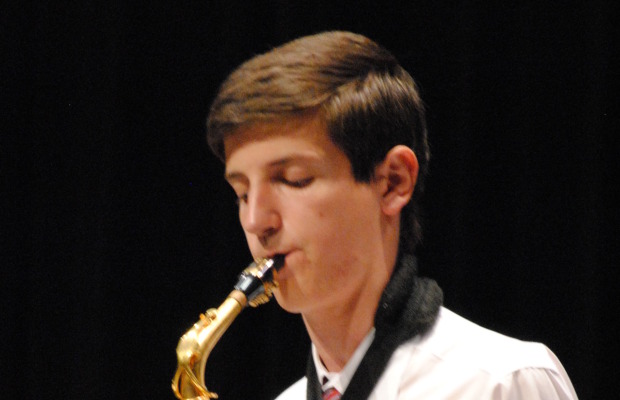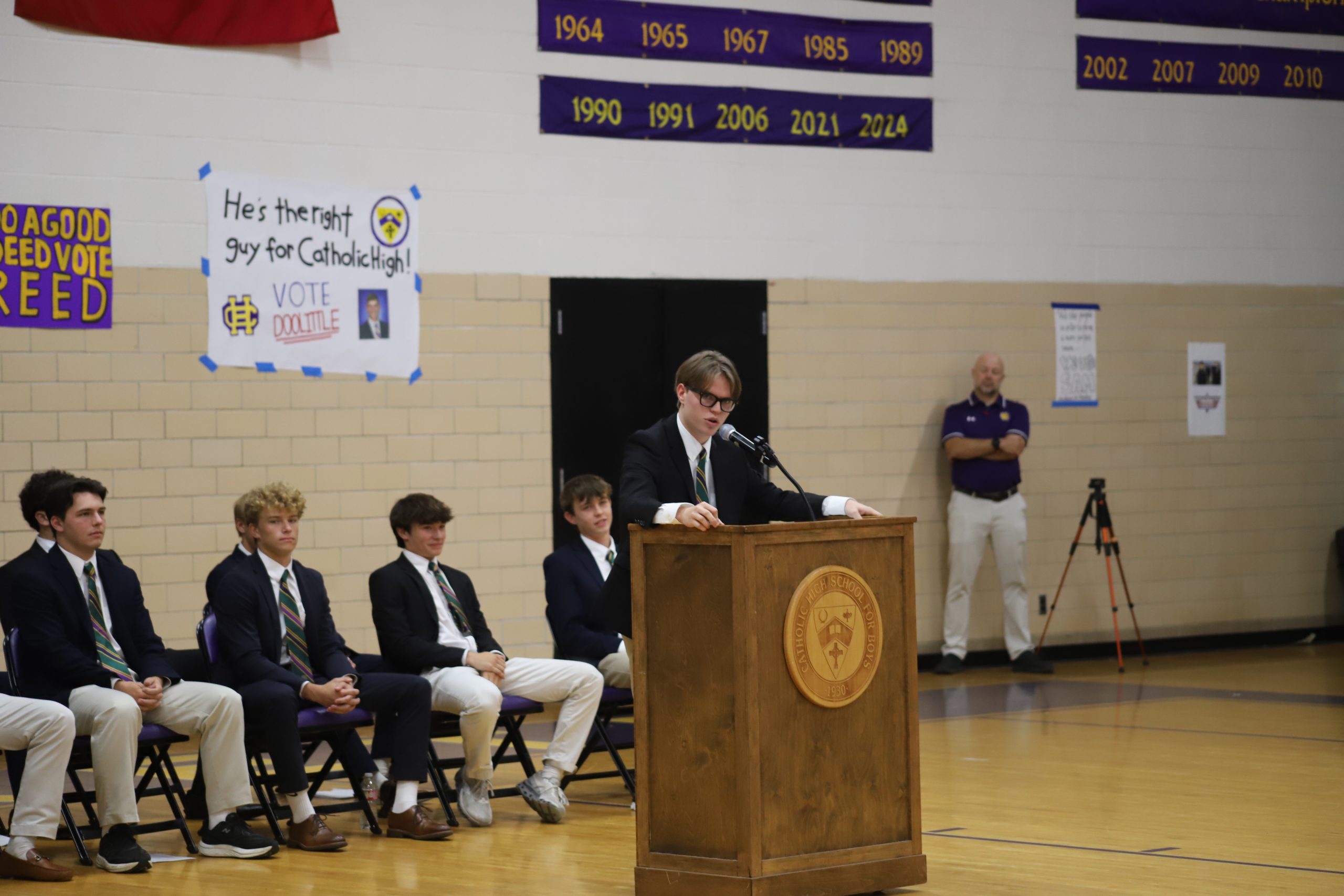It was a cold, mid 30° bleak Arkansas day on November 15. The sky was dark and the souls of outside travelers were cold. The dreariness did not affect the jazz stylings of the Region 1 jazz band, however.
The band was made up of the best jazz players from Region 1, which encompasses Pulaski and Saline counties. One of our own, junior Nicholas Vanhaute, was the second chair alto saxophone player in the first band.
“The judges did their job perfectly,” said Vanhaute. “Pretty much everyone in the first band was on an equal level. No one struggled heavily with their part for more than a few minutes. It was really obvious that the judges enjoyed critiquing music.”
Even with all the accomplished musicians around him, Vanhaute felt right at home.
“Last year at all-region concert band was my first time playing with an advanced band,” said Vanhaute. “Although I deserved to be there, I felt very much outclassed in terms of skill due to all of the accomplished juniors and seniors. Once I got to all-state, however, I had improved and felt I could match the skill level of many of the other players.”
“I first got into jazz when I heard a Dave Brubeck recording from my saxophone teacher. I thought it sounded cool, so I went home and learned it. Eventually, learning jazz became less about sounding cool and more about enjoying what I was playing. At a certain point, the theoretical side drew me in as well. The way the chord changes and scales interact is always fascinating. The virtuosity of many jazz players also inspired me to learn improvisation. Jazz is much more laid back than something we would play in concert band. Jazz is more about spontaneous creation than it is about nailing every sixteenth note.”
All great jazz players have many predecessors to draw inspiration from, and Vanhaute is no exception.
“I have been inspired by many great jazz musicians,” said Vanhaute. “Charlie Parker the most, Michael Brecker, Eric Dolphy, John Coltrane, Sonny Rollins, and Paul Desmond. I find Charlie Parker the most inspiring because he always made the time to develop new ideas, chord changes, and sounds.”

The regional musicians spent hours and hours practicing for the audition, and after finding out their positions, the players had only Friday evening to prepare four pieces for the concert the following morning. The performance showed that the preparation was enough.
The set started off with a New Orleans second line jazz style number, the aptly named, “Greasing the Skids.” The bright mood of the number greased the ears and minds of the players and listeners.
“It was a fun piece to play,” said Vanhaute. “It alternated between a melodic swing style and a New Orleans street backbeat. It was probably the most technically challenging thing we played.”
The second selection was an old jazz standard called, “Sometimes I Feel Like a Motherless Child.” As the title suggests, the song was in a minor key and felt quite melancholy. This song served to be the black sheep of the set, a sharp contrast to the other major, more chipper songs.
“’Sometimes I Feel Like a Motherless Child’ was a really lyrical and emotional piece,” said Vanhaute. “Even though it was the least technically challenging, in some ways it was the hardest musically because of the tricky phrasing, rhythm, and dynamics.”
The third song was a tribute to the late great saxophonist John Coltrane, one of Vanhaute’s main inspirations. The song, Mr. PC, was a canvas of improvisation. Even though it showed its length at the end (capping out at 15 minutes), it felt fresh throughout.
Vanhaute said, “The structured improvisation aspect really added to the challenge of performing. None of us had any music to look at, so everything we did was based on our ears. I liked this one because I think a written arrangement with solos wouldn’t have been as good. Not having the chords in front of you forces you to pick the notes you play carefully and to feel the chord changes.”
The last song was the Illinois Jacquet composition, “Flying Home.” This song prominently featured the sax section.
“This was my favorite song we played,” said Vanhaute. “It was my favorite piece because of how similar in style it was to the big bands of the 40s and 50s. It felt like I was playing in an old jazz club.
“I liked the whole experience,” said Vanhaute. “I thought the director would be overly critical about everything, but he was actually really kind and respectful. Like most concerts, this one had a good balance between happy and sad, and fast and slow. I think the director went with a standard set list, and ended with a happy and upbeat tune. You have to leave the audience in a good mood.”
All photos were taken by Sofia Calvert.










